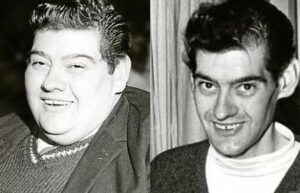Nature never hurries, yet everything gets done. — Tao Te Ching
My good friend Rosie Taylor, a yoga teacher of nearly 30 years, has a wonderful saying, “after ecstasy comes the laundry.” This saying has always stuck with me and is deep with layers of meaning. No matter what your peak moment of ecstasy, whether it’s religious or spiritual fervor, making money, setting a new personal record, or winning a championship, most life and training boils down to the seemingly mundane, daily grind. Learning to bring awareness into the normal, daily work can bring us happiness in life and transfer to performance in surprising ways.
What Now?
This challenge can be especially obvious in the gym or training hall when athletes get addicted to chasing the high of constant progress and the setting of personal records. They are riding on the excitement of small rewards and the immediate tangible sense of accomplishment that comes with a moment of perceived victory or success over a challenge provides. While not necessarily a bad thing in and of itself, this behavior can be a trap because, as many of us know; the longer you train, the less you get back for twice the work (law of diminishing returns).
This can also happen when an athlete accomplishes an amazing goal like competing at a high level for the first time or winning a competition. Afterward, there can be a sense of “what now?”. Sometimes singularly goal-oriented people may even experience depression or anxiety and have trouble navigating normal life after achieving the highest honors and accolades in their chosen endeavor. The high was so high and the experience was so intense that the drop on the other end is devastating.
The same can be true for many other situations where there are large peaks and valleys in the emotional experience that create a huge chemical dump. This can make intense experiences as addicting as any food, drug, or gambling out there. Let’s face it, our modern industrialized and technology-based culture makes it easy to fall into the cycle of instant gratification, neophilism, and outcome-based thinking, rather than a process-oriented approach that ultimately leads to longer term happiness and serenity.
Pleasure in the Daily Grind
The fact that so much of life and sport is beyond our control, that having a stenciled expectation of a particular outcome leaves little flexibility. Not only can this lead to heavy disappointment but also limits our palette of possibilities in situations that require real-time creativity and problem-solving. In this way too much focus on goal-oriented thinking can potentially be a handicap if it is not used properly.
Being able to take pleasure in the daily grind, the chopping wood and carrying water of each day, allows us to take a conscious approach to any behavior we engage in and bring it back into our performance. This behavioral bias better brings us into flow states, and connects us to “the zone”, and then ultimately to perform better than we may have been able to imagine.
Performing the most menial of tasks with full attention helps us connect the dots between various behaviors we engage in whether training or non-training related, and develop a deeper understanding of what it is we are actually doing and what it’s doing to/for us. Staying mentally connected with skill development in our chosen endeavor may seem less sexy than going big every day. However, in the moments that really matter if the laundry is done it leaves us to focus our full attention on pinnacle moments when they arise.
Embodying a process-based way of thinking also keeps us humble. We ride the crests and troughs of life more easily, and we can then truly enjoy the highest of highs because we know that this too is impermanent and that life will fall back to a lower and less exciting rhythm. This waxing and waning is ultimately in accordance with Nature.
It’s ok to have goals and to be excited about achieving them. However, keeping a balanced perspective that allows us to fully participate in our own process will allow the best version of reality to unfold. So partake fully in your moments of ecstasy, wherever they may reveal themselves. But to remember that the balance of peace in the mundane is what makes those moments possible.

